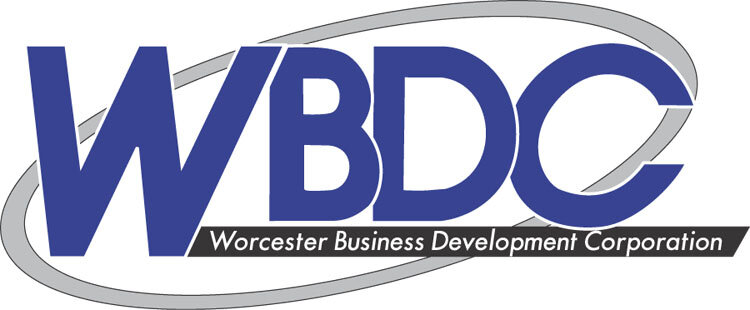Residents Review Downtown Theatre District Master Plan
Steven H. Foskett Jr., Worcester Telegram & Gazette
Residents offered praise, ideas, suggestions and critiques at a community forum Wednesday night for the Theatre District master plan.
More than 100 people attended the forum at The Hanover Theatre for the Performing Arts to get a look at — and a crack at — the master plan, which re-imagines the 30 downtown acres from the Hanover Theatre to the Worcester Public Library to the Mid-Town Mall to Main Street.
The plan, a joint effort by the city and the Worcester Business Development Corp., envisions the neighborhood as a vibrant district where, as Skip Smallridge from the design firm Crosby Schlessinger Smallridge put it, people will “live, work, study and play.”
With the purchase of the former Telegram & Gazette buildings and parking lot, the WBDC became a major player in the development of the neighborhood. Craig Blais, president of the WBDC, said Wednesday a big announcement on the redevelopment of the former T&G buildings is coming soon. He acknowledged it has been no secret that the WBDC has been trying to woo Quinsigamond Community College to set up a footprint in the neighborhood, and said it’s part of a broader plan to bring more college students downtown.
Mr. Smallridge said Federal Street is a special focus of the master plan, which repurposes the short street into a pedestrian-friendly outdoor room packed with mixed-use development, including street-level retail. It’s only one block long, and the surrounding architecture lends itself well to the concept, which has worked in places like Cleveland’s Fourth Street, Mr. Smallridge said.
The master plan is also keen on strengthening pedestrian connections throughout the neighborhood. The plan calls for repurposing the network of small alleyways like Allen Court and Burnside Court into inviting, walkable spaces. The plan proposes a pedestrian walkway that will cut through an existing Portland Street garage to end up near the library entrance on Salem Street. Both Salem Street and part of Portland Street are envisioned as one-way streets to allow for angled parking. A large parking garage is proposed for the Myrtle Street side of the former T&G lot.
On Allen Court, the plan entertains the possibility of a black-box theater, complete with a glassy entranceway on Main Street where the Great Wall restaurant and mobile phone store are located.
People at the forum heaped praise on the plan. James D. O’Brien Jr., chairman of the board of directors at the Hanover Theatre, said his board hasn’t taken a formal vote on the master plan, but said the consensus is that the board heartily endorses its spirit.
He cautioned that with the construction of a parking garage on Myrtle Street, along with further development of the Federal Street side of the old T&G lot, it will be important to retain truck access for productions at the theater. He also pushed for more attention to be paid to the development of the building next to the theater.
Susan Smith, a co-founder of the former Foothills Theater, said the idea of an entire Theatre District is a thrill. But she said the plan also needs to be mindful of the “smaller elements,” like the Theatre Café on Main Street.
Judy Finkel of the Library Board of Directors said the board is excited about the plan, and likes the idea of opening up the library to the rest of the neighborhood. But she cautioned that the library, which expects to service 500,000 patrons annually, needs to continue to have safe, affordable, accessible parking. Dante Comparetto, another library board member, said library patrons won’t want to pay higher garage rates and have to walk to the library.
City Councilor-at-Large Konstantina B. Lukes said she has read that Mr. Blais has been showing the McGrath lot to investors, and questioned the relationship between the private WBDC and the city.
Mr. Blais said there’s nothing sinister going on in him showing investors the parking lot. He said he is upfront with them about the city’s ownership of the lot.
The master plan calls for the redevelopment of the McGrath municipal parking lot, which is next to the library. Plans have been discussed to build twin ice hockey rinks there that the city’s colleges could use, but last night Timothy McGourthy, the city’s chief development officer, said that while the idea of an ice rink has been floated, the master plan only advocates for some sort of development on the site. He added that any development of the city-owned lot would go through a public process separate from the master plan.
“What you are looking at is a building envelope,” Mr. McGourthy said. “It’s not a hockey rink.”
The plan also moves the YWCA’s day care outdoor area to newly created space in the front of the building, and envisions a new bookstore/café on space created by the realignment of Library Lane.
Frank Carroll, who owns a business across from the Hanover Theatre, said the vision in the master plan is uplifting. But he, too, was concerned about redevelopment of the McGrath lot. He asked what the city would gain by turning over ownership of a public piece of land to special interests.
Deborah Packard, director of Preservation Worcester, said she was excited about the plan, particularly its plans to introduce more market-rate housing, improve pedestrian access, and introduce angled parking. But she was concerned about demolishing buildings for the black box theater.
Resident and local blogger Nicole Apostola said she likes the plans for Federal Street, but also questioned taking away two storefronts as part of the black box theater. She also said the rendering of the new facade for the Franklin Street side of the old T&G building is ugly, and questioned what the master plan’s intentions were in imagining new retail uses in places like the Mid-Town Mall that are more responsive to existing downtown office clientele. She said those businesses wouldn’t be in business if they weren’t serving a need.
Rachel Brown said aesthetically pleasing concepts like brick walkways present real impediments to people who have mobility issues. Other residents wanted to make sure the plan addressed things like incorporating more public transportation connectivity, including more gym and sports facilities, and ensuring that people of color would have opportunities to work on the redevelopment of the area.
Stephan Mita said it’s a great economic master plan, but said it needs to be much more specific in how each building and lot in the district is laid out. He said Federal Street is just one street, and cautioned that the comparison to Cleveland’s Fourth Street, which is near stadiums for top professional sports teams, is not as similar to Federal Street as one might think. He said he hopes the city and the WBDC take the process to the next level by addressing those details, and said officials should rethink the notion that once a certain density of people is achieved that retail will simply follow. He said there should be much more specific planning for retail spaces.

